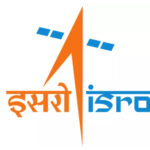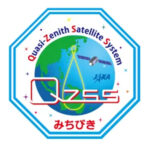There are many different types of Global Navigation Satellite System (GNSS), one of which is GPS, otherwise known as Navstar, the US owned satellite constellation.
The below GNSS are operated by their respective states, designed to operate as standalone systems, or interoperable with others.
BeiDou
The BeiDou Navigation Satellite System (BDS) is a Chinese Global Navigation Satellite System which was completed on 23 June 2020.
BeiDou is comprised of two satellite constellations; the original BeiDou system, officially called the BeiDou Satellite Navigation Experimental System (BeiDou-1) which consisted of three satellites which provided limited...
Galileo
Galileo is the European GNSS (Global Navigation Satellite System) solution, operated by the European Space Agency.
Galileo was released in the year 2016 and is currently operated by the European GNSS Agency (GSA), which has its headquarters in Prague, Czech Republic, supplemented by two ground control centres in Italy and Germany; the regions...
GLONASS Global Navigation Satellite System
The Russian Global Navigation Satellite System (GLONASS) is a GNSS satellite navigation system developed as an alternative, as well as complementary to other satellite systems such as the United States' Global Positioning System Navstar (GPS), the Chinese BeiDou-3 navigation system or the European Union Galileo Positioning System...
Indian Regional Navigation Satellite System (IRNSS)
The IRNSS, also known as Navigation Indian Constellation (NavIC), is an independent regional navigation satellite system developed by India.
IRNSS is a regional GNSS owned and operated by the Government of India. It is designed as an autonomous system to provide accurate position information service to assist in the navigation of ships in the...
Navstar (GPS)
The Global Positioning System (GPS) is the United States Global Network Satellite System (GNSS), a space-based navigation system nominally consisting of a 24-satellite constellation that provides positioning and timing information to military and civilian users worldwide.
GPS was launched in the late 1970s, and was the first GNSS system, initially...
Quasi-Zenith Satellite System (QZSS)
QZSS, also known as Michibiki, is a Japanese satellite positioning system composed mainly of satellites operating in quasi-zenith orbits (QZO), servicing the Asia-Pacific region.
From November 2018, it has operated satellite constellation of 4, with another 3 planned.
This satellite system was designed to work in conjunction with a standalone...
International Cooperation
Interoperability between international Global Network Satellite Systems requires early co-operation during the design phase.
Most countries have have come to agreements regarding interoperability.
Some examples of these agreements are:
- 1998: QZSS and GPS
US-Japan in agreement that their systems be fully compatible and highly interoperable. - 2003: Galileo and BeiDou
EU-China cooperation agreement which lead to regular technical meetings covering compatibility and interoperability between the two systems. - 2004: Galileo and GPS
EU-US agreed to provide the foundation for cooperation, and as a result the result was the creation of four working groups.
The MBOC modulation was one of the most striking outcomes at signal level. - 2005 onwards: GPS and Glonass
US-Russia in negotiations for an agreement on GNSS co-operations. - 2007: GPS and IRNSS
GNSS co-operation between US-India






